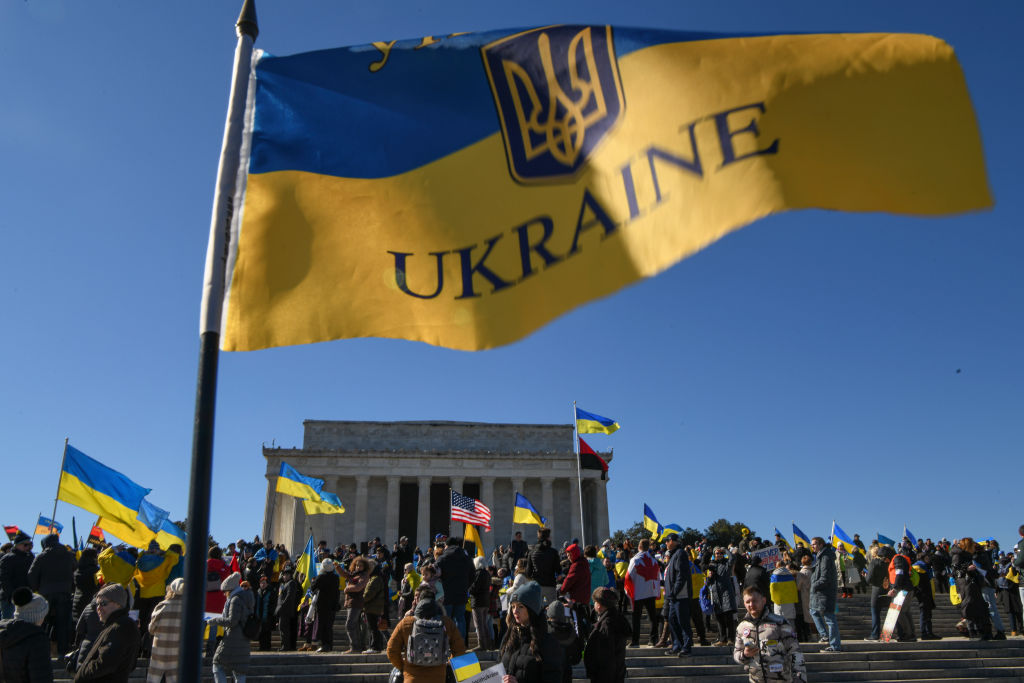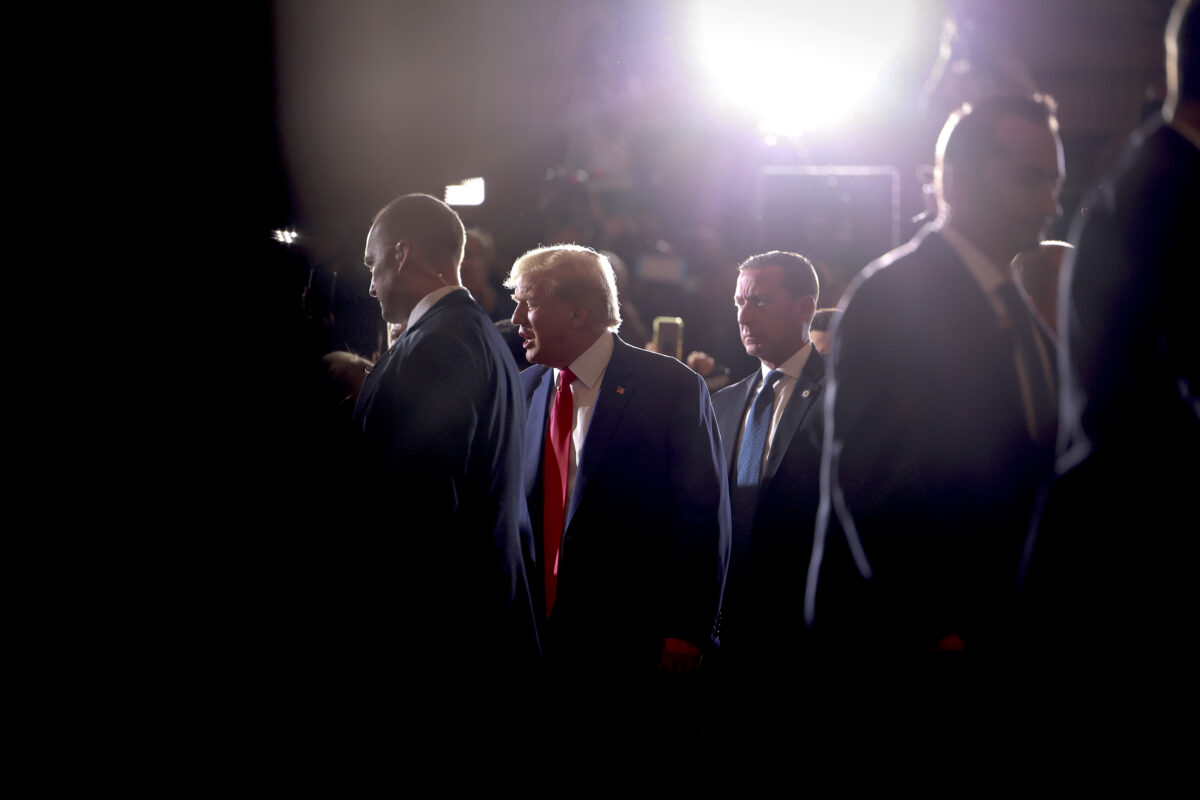By Nathan Worcester
News Analysis
It’s been more than a week since the indictment of former President Donald Trump dominated the news cycle.
What happened to the story?
As of the late afternoon on April 13, the name “Trump” appeared nowhere on the front page of Google News.
There and elsewhere, the arrest of 21-year-old Jack Teixeira, accused of leaking classified national defense material, claimed the limited attention spans of those in the Journalist-American community.
Trump and the indictment didn’t make the very top of The New York Times’ digital front page. Yet, the title of a subsection about a quarter of the way down, “The Trump Investigations,” offers some clues as to how Manhattan District Attorney Alvin Bragg’s controversial case may be recast—namely, as one of many legal quagmires through which the ex-commander-in-chief must trudge.
Fox News was accused in March of a soft ban on Trump appearing on its channel, yet hosted on April 12 Trump’s first interview since his indictment, which it featured partway down its digital front page. An article on Bragg also made the cut.
The former president was almost a total non-entity on the digital front page of CNN, famously dismissed by Trump as “Fake News CNN.”
It’s part of a noticeable pattern over the past week. Although coverage of Trump has fluctuated, it has generally trended downward. Yet, the legacy media’s “indispensable man” has never fully exited the news cycle.
Weak Case Driving Coverage Downward: News Analyst
Kevin Tober, a news analyst with the conservative Media Research Center, has been monitoring coverage of Trump.
His March 28 article, written before Trump’s indictment was released, noted that the four big Sunday news roundtable shows obsessed over that story while ignoring key new stories that could hurt President Joe Biden.
Those revelations included emails from Biden’s vice presidency suggesting that members of the Biden family sought to downplay coverage of Hunter Biden’s Burisma Holdings board membership in 2015, along with subpoenas from the House Oversight Committee that appear to link the Bidens to payouts from a Chinese energy company.
Tober has a theory about why the indictment has faded from view.
“I think the media looked at what’s in the indictment, and they realized there’s nothing there,” he told The Epoch Times in an April 12 interview.
“Even they are embarrassed to be hyping this,” he added.
Once the indictment was unsealed, legal experts quickly identified numerous flaws in it. Those issues range from the way it blends state and federal laws to its vagueness concerning Trump’s alleged second crime.
Yet, even if the media is quietly backing away from a weak case, its powerful megaphone may have served the intended purpose.
Pro-Trump commentator John Doyle argued in an April 7 video that people who don’t follow the news closely will see the former president more negatively on average because of the indictment.
“They’re just going to remember that, you know, every time they turned on the news in the gym, whatever, it seemed like Trump was wrapped up in some scandal, which will just make them more likely to think, ‘Well, they finally got him,’” Doyle said.
The media, Tober said, is “always quick to report on anti-conservative or anti-Republican stories.”
In his view, one of the media’s biggest tricks is omitting or downplaying inconvenient information, sometimes in response to explicit instructions.
He cited CBS News’ ban on the word “transgender” in its coverage of the shooting at the Covenant School in Nashville, as reported by the New York Post.
‘The Current Thing’
One useful concept for making sense of the news cycle originated over a year ago as a spinoff of the “non-playable character” (NPC) meme—”The Current Thing.”
The Current Thing is often the top story for days, weeks, or even months at a time. And not only are you forced to think about it—you’d better support it or risk paying the social price.
An early example comes from 2012, with the crusade against African warlord Joseph Kony.
More recently, The Current Thing has ranged from COVID-19 to the war in Ukraine.

For many, The Current Thing is becoming harder and harder to escape with each passing year.
“The Current Thing, at a fundamental level, is a distraction. Any distraction,” said Adam Ellwanger, an English professor at the University of Houston-Downtown, in an April 14 interview with The Epoch Times. “American society is at a very late stage in its degradation.”
Ellwanger wrote about what he sees as the elite-driven nature of The Current Thing for The American Conservative in 2022.
“Current Thingism is about freezing the public gaze on ONE problem, in the hope that they remain oblivious—or indifferent—to the rest, and thus remain ignorant of the bigger picture,” Ellwanger added. “Because the establishment is thoroughly leftist, the issues that become The Current Thing are ones that are conducive to advancing the agenda of the political and cultural left.”
For a few days, Trump’s indictment was The Current Thing.
Yet, as Tober noted, the story lost momentum over the following week, though didn’t disappear completely.
The indictment-related stories that did emerge illustrate another powerful weapon in the media’s arsenal—namely, the framing of a specific story and the latest Current Thing.
On April 11, for example, Bragg’s lawsuit against Rep. Jim Jordan (R-Ohio) dominated many headlines.
Jordan’s original subpoena, the trigger for Bragg’s reaction, hadn’t commanded anything resembling the same amount of attention.
“Framing is very often ideological,” Tober said.
Some argue that The Current Thing is more a product of financial incentives than of political belief. After all, journalists make money from the public’s attention. Why wouldn’t they capitalize on a snowballing story, regardless of ideology?
Despite its legendary self-obsession, the media itself might not give you the best answers.
“The media kind of goes back and forth like a ping-pong ball. They follow whatever the new thing is, the new controversy,” Tober said.
This writer ran a test using the most unscientific method possible: a Twitter poll.
In the eyes of those who answered, ideology edges out money in establishing The Current Thing, leaving chance or other factors in the dust.
In fairness, it’s pretty hard to imagine that our media presents—and polices—the latest big stories without taking politics into consideration.
The current Current Thing, Texieira’s arrest, has been publicized as a national security risk for the United States and a possible justification for expanded government monitoring of social media by the Biden administration.

It comes just weeks after Congress proposed the RESTRICT Act, a putatively anti-TikTok bill that could greatly expand the government’s ability to clamp down on online communications.
The explosive content of the leaks, and what they reveal about the United States’ involvement in Ukraine, has remained a relative afterthought.
Trump vs ‘The Current Thing’
Trump has long had a complicated relationship with the media and its Current Things.
Even as he supposedly “craved media approval,” the real estate mogul and reality show star had a knack for disrupting the press’s narratives while leading the country.
He also captured clicks and eyeballs for legacy and non-legacy outlets alike.
“They [the media] just can’t get over their obsession with the president,” Tober said.
Even today, he said, “it’s always Trump, Trump, Trump” on the news.
“We always joke, ‘Well, who’s the president right now?’”

Many Current Things in the past few years have been driven wholly or in part by Trump.
Like other Republican leaders before him, he’s provided a focal point for leftist ire. In some ways, the Trump phenomenon—perpetually seen as an emergency, forever dominating the news cycle, and always demanding a politically safe response—was the most durable Current Thing of the past few years.
Yet, in Ellwanger’s view, Trump has offered Americans a path away from The Current Thing.
“He seeks to move the public’s attention away from The Current Thing in order to see the broader degradation,” he said.
“If the public were to get that broader panorama, they would recognize that some radical alternative is needed to the current establishment. Which, of course, would empower Trump. Therefore, he remains Public Enemy #1 according to Current Thingism.”
As of early Friday, Teixeira and the bombshell documents continued to dominate headlines, leaving the man from Mar-a-Lago in the shadows.
It’s hard to believe that will last, particularly given the unprecedented nature of what has happened with Trump.
The Current Thing comes and goes, but Americans’ polarized responses to the indictment of a former president don’t seem likely to vanish without a trace.






